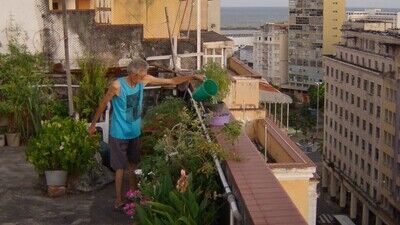The Brazilian filmmaker Kleber Mendonça Filho understands this feeling just as well as I and maybe you do, and he’s made a lovely, enveloping film about it, called “Pictures of Ghosts.” The subject here is his hometown of Recife. It’s not a place that looms as large in North American discourse as Rio or San Paolo, but it is a major metropolis in a country that, we ought not forget, is larger than the contiguous United States by a not inconsiderable margin.
While Filho is best known here as co-director of the audacious dystopian 2019 quasi-Western “Bacarau,” his prior feature films are set in Recife and were shot there, on occasion in the apartment in which the 53-year-old director grew up. He divides this documentary into three parts; the first is about his childhood home, with particularly affectionate memories of his mother, a progressive political activist who informed his sensibility and his conscience and who died in her early fifties. He includes clips from the crude horror movies he made as a boy, and the more polished ones he made in his adulthood, and we recognize archways and window in the apartment. He tells the tale of a neighborhood dog, Nico, whose barks on weekend when his people would abandon him would keep his household up. Years later, he hears Nico’s bark again while staying in the old place and wonders if he’s hearing the ghost of the dog. But no: national television is screening Filho’s first feature film, “Neighboring Sounds,” and the residents of another apartment are watching it; Nico has been resurrected by his own film’s soundtrack.
The ghosts of the movie’s title are sometimes particular. There’s a still photo Filho took on a trip around the neighborhood, highlighting an ectoplasmic figure that could be a phantom. And later, transferring analog film to digital, a moving image of a movie theater marquee starts glitching in a way that suggests a coded message. In the movie’s second part, Filho takes us on a tour of Recife’s film culture, mostly by way of now-closed movie theaters, two of the most-missed ones once facing each other across the Capibaribe river. One of them had been set up with German money and was being used to spread Nazi propaganda in the 1930s; dirigibles such as the Hindenburg apparently visited Recife on the regular.
Running still photos and archive footage as his fancy takes him, the director makes wordplay out of marquee titles “’My Name is Nobody’ … ’My Name is Earthquake,’” he intones, conflating the then-now-playing Spaghetti Western with the coming attraction boasted underneath. He interviews a projectionist who screened “The Godfather” in a single theater for a whole month. We may consider that a movie one could never get sick of, the projectionist, Alexandre Moura, begs to differ, at least a little.

